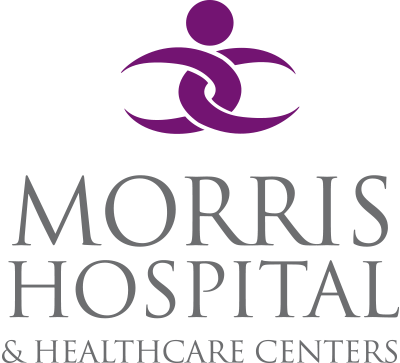What is Computerized Tomography (CT or CAT scan)?
Computed tomography (CT), sometimes called CAT scan, uses special x-ray equipment to obtain many images from different angles and then joins them together to show a cross-section of body tissues and organs. CT scanning provides more detailed information on head injuries, stroke, brain tumors and other brain diseases than do regular radiographs. It also can show bone, soft tissues and blood vessels in the same images.
ABOUT THE EXAM
WHERE CAN I HAVE MY CAT SCAN DONE?
Patients can schedule their CT scan at Morris Hospital, the Morris Hospital Ridge Road Campus in Channahon.
WHAT WILL THE EXAM BE LIKE?
The CT scanner is a large machine with a hole in the center, something like a doughnut. The machine will make clicking and whirring noises as it acquires the images. The individual who will perform the study is known as a Radiologic Technologist. He or she has completed a rigorous course in Radiologic Technology and additional training in CT imaging.
After explaining the exam, the technologist will position you on the table. The table will move into the open center of the donut as the x-rays are being taken. In order to obtain the best images possible you will be asked to lie very still during the scanning and you may have to hold your breath for brief periods.
Though the technologist will be able to see and speak to you, you will be alone in the room during the exam.
ABOUT CONTRAST
Additional information may be gathered with the use of contrast media during CT scanning. Contrast media is a solution that “highlights” certain tissues on the x-ray images, which may help give additional information to the Radiologist when analyzing tissues, organs, and blood vessels.
Contrast media can be given in several ways:
Oral Contrast: Most patients having abdominal or pelvic CT scans will be asked to drink contrast media prior to scanning. This will “coat” the stomach and intestines to highlight them during scanning. Most patients have few if any side effects from drinking the oral contrast.
Intravenous (IV) Contrast: Depending on your symptoms and the area of the body being scanned, the blood vessels may need to be more clearly identified. If so, a small needle will be inserted into your arm and contrast media injected. The images will be taken during or after the injection of contrast media. This contrast is removed from the body through the kidneys. You should drink plenty of fluids after receiving IV contrast unless this is contraindicated due to a medical condition. The contrast is clear and will not be visible in you urine.
Rectal Contrast: Less frequently, contrast may be given rectally in order to highlight the rectum and lower portion of the large intestine. This is similar to an enema, but with minimal discomfort. The contrast is instilled, images taken, and the contrast allowed to drain.
Please Note: You may receive more than one type of contrast.
HOW DO I PREPARE FOR THE EXAM?
You should wear comfortable clothing for your CT exam. Metal objects can affect the image. You may be asked to remove hairpins, jewelry, eyeglasses, hearing aids and any removable dental work that could obscure the images.
There are different preparation instructions depending on the type of scan to be performed. You will be informed of what to do to prepare for your scan when your exam is scheduled.
HOW LONG WILL THE EXAM TAKE?
Generally, the exam will take about 30 minutes.
FOLLOWING THE EXAM
You should have no discomfort or pain from this exam. You may return to your normal daily activities unless otherwise instructed.
EXAM RESULTS
A Radiologist will study the images and a typed report will be sent to your designated health care provider.
SPECIAL NOTE
Women should always inform their health care provider or technologist if there is any possibility that they are pregnant.
If you should have any questions regarding this procedure, please call 815-942-2932 ext. 7130.
